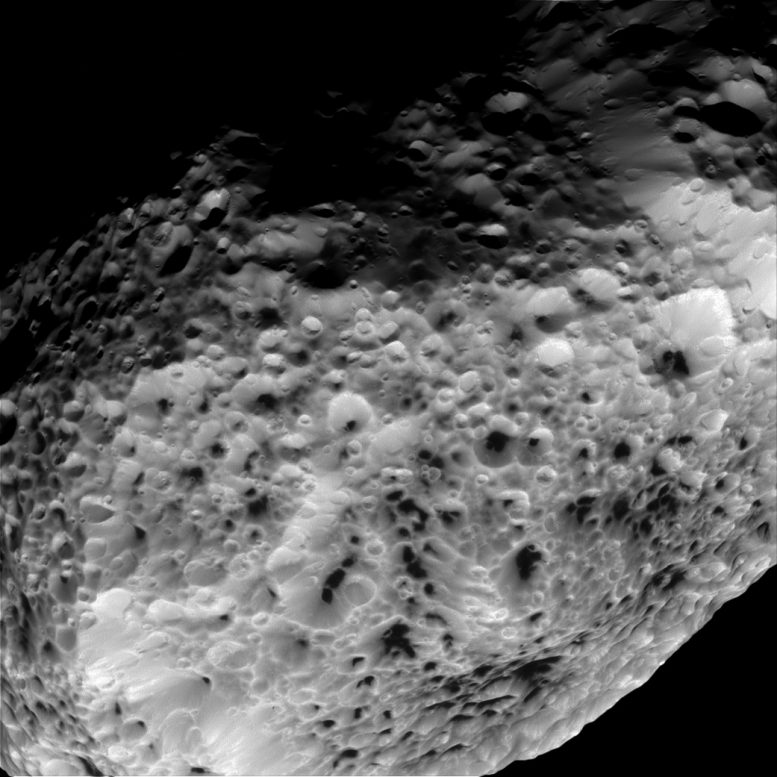
North on Hyperion is up and rotated 55 degrees to the left. The image was taken in visible light with the Cassini spacecraft narrow-angle camera on May 31, 2015. The view was acquired at a distance of approximately 24,000 miles (38,000 kilometers) from Hyperion and at a Sun-Hyperion-spacecraft, or phase, angle of 46 degrees. Image scale is 145 feet (230 meters) per pixel. Credit: NASA/JPL-Caltech/Space Science Institute
This image (taken during a close flyby on May 31, 2015) marks Cassini’s final close approach to Saturn’s moon Hyperion.
NASA’s Cassini spacecraft has returned images from its final close approach to Saturn’s oddball moon Hyperion, upholding the moon’s reputation as one of the most bizarre objects in the solar system. The views show Hyperion’s deeply impact-scarred surface, with many craters displaying dark material on their floors.
Raw, unprocessed images from the May 31 flyby are available via the Cassini mission website at: http://saturn.jpl.nasa.gov/photos/raw
During this flyby, Cassini passed Hyperion at a distance of about 21,000 miles (34,000 kilometers) at closest approach. Cassini’s closest-ever Hyperion flyby took place on September 26, 2005, at a distance of 314 miles (505 kilometers).
Hyperion is the largest of Saturn’s irregular, or potato-shaped, moons and may be the remnant of a violent collision that shattered a larger object into pieces. Cassini scientists attribute Hyperion’s peculiar, sponge-like appearance to the fact that it has an unusually low density for such a large object — about half that of water. Its low density indicates Hyperion is quite porous, with weak surface gravity. These characteristics mean impactors tend to compress the surface, rather than excavate it, and most material that is blown off the surface never returns.
Cassini will make several more close flybys of Saturn’s moons this year before departing the planet’s equatorial plane to begin a year-long setup of the mission’s daring final act. For its grand finale, set for 2017, Cassini will repeatedly dive through the space between Saturn and its rings.
The Cassini-Huygens mission is a cooperative project of NASA, ESA (European Space Agency), and the Italian Space Agency. NASA’s Jet Propulsion Laboratory in Pasadena, California, manages the mission for the agency’s Science Mission Directorate in Washington. The Cassini imaging operations center is based at the Space Science Institute in Boulder, Colorado. The California Institute of Technology in Pasadena manages JPL for NASA.

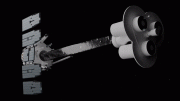

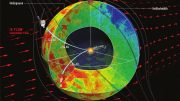

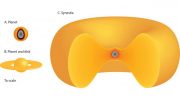
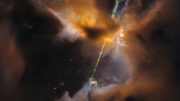
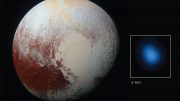
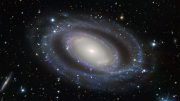
Be the first to comment on "Cassini Sends Final Close Views of Saturn’s Moon Hyperion"